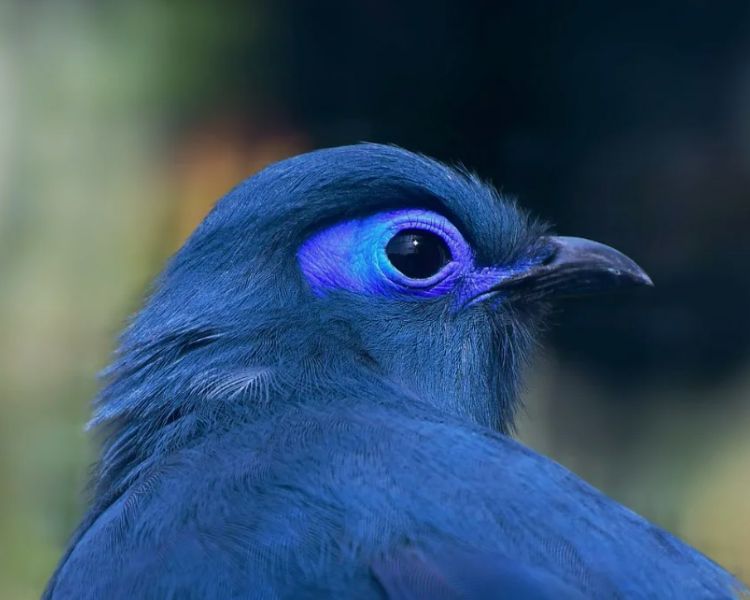
Introducing the Blue Coua, a remarkable tree-dwelling bird with a curious and energetic personality, much like its coua counterparts. This stunning bird is characterized by its long tail, dark feathers, and agile movements as it hops and flops through the trees. But don’t be surprised if you catch it engaging in breathtaking gliding flights, accompanied by sporadic explosive wingbeats.
The Blue Coua boasts a spectacular deep blue plumage that covers its entire body, including its wings and tail, which shimmer with a violet sheen. Its head features a brief crest, and the skin around its eyes ranges in color from cobalt-blue to violet. The Black bill and brown to reddish-brown eyes of this bird add to its unique features. Its legs and feet are tinged with blackish hues.
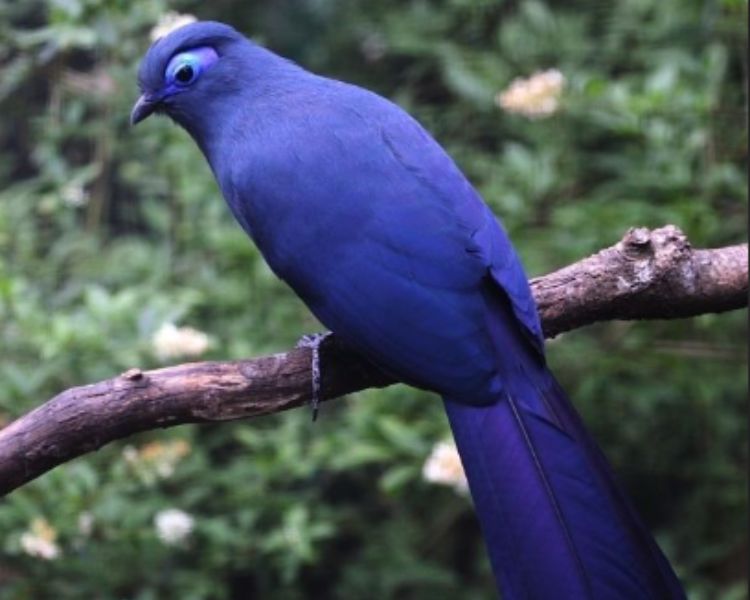
Olaf Oliviero Riemer’s photograph titled “Coua caerulea (Blue Coua) – Weltvogelpark Walsrode 2013-02” is licensed under the CC BY-SA 3.0. The Blue Coua species exhibits similar physical features for both male and female birds. However, juvenile Blue Couas have a different appearance, with their back, rump, and lower belly covered in black plumage. In addition, their wings have a less vibrant blue hue, and lack the striking violet iridescence found in adult Blue Couas. Notably, the area around their eyes is feathered, unlike the bare skin seen in adult individuals.
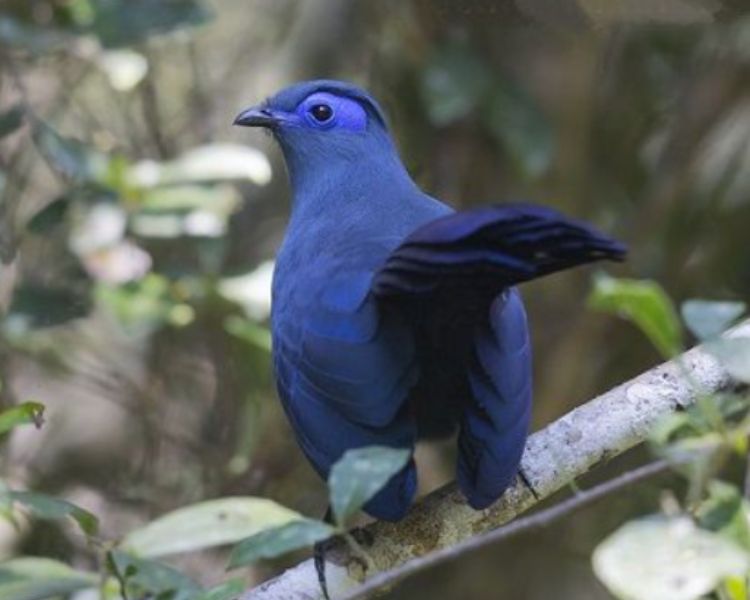
The Blue Coua is a unique species that can only be found in Madagascar. It is commonly seen in the eastern and northwestern parts of the island. This bird prefers to reside in primary rainforests, secondary growth, deciduous forests, and mangroves. Occasionally, it can also be seen in plantations such as clove and cacao, but it generally avoids dry forests. The Blue Coua’s habitat can be found from sea level to an elevation of 1,800 meters. However, it is more prevalent below 1,200 meters in the southeastern part of Madagascar.
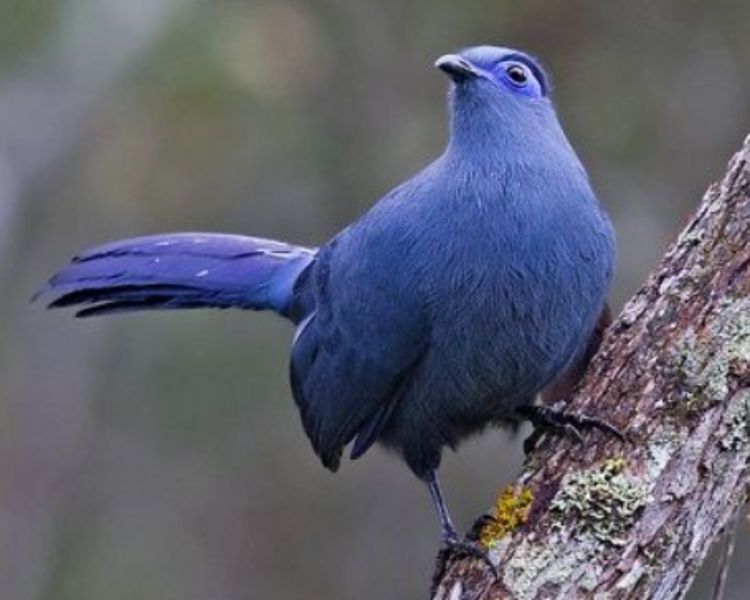
The Blue Coua, captured in “Coua caerulea (Blauer Seidenkuckuck – Blue Coua) – Weltvogelpark Walsrode 2013-01” by Olaf Oliviero Riemer, is a bird with a diverse diet that includes insects, chameleons, crabs, frogs, fruits, and flowers. This arboreal species can be found foraging from treetops to undergrowth, but typically lives in the midstorey. They are usually solitary or in pairs, but can form small family groups after breeding season. Male courtship feeding is common during courtship displays.
Breeding season for the Blue Coua occurs mainly during the rainy season between July and December. They construct their own nests using sticks and prefer to place them in dense foliage around 3.5 to 10 meters above the ground. The female lays a single white egg, which both adults participate in incubating and feeding. However, specific incubation and nestling durations have yet to be well-documented. “Coua caerulea (Blauer Seidenkuckuck – Blue Coua) – Weltvogelpark Walsrode 2013-03” by Olaf Oliviero Riemer showcases this beautiful bird.
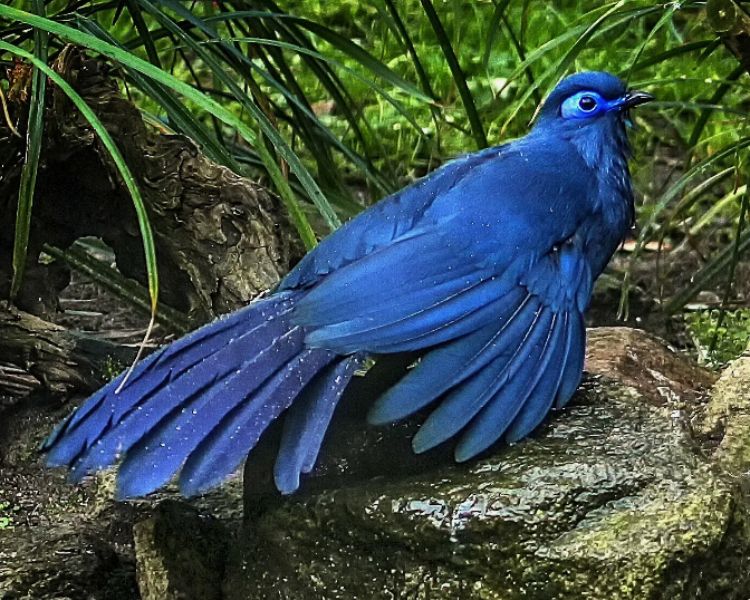
The Blue Coua, also known as the Blauer Seidenkuckuck, is a bird commonly found in suitable habitats. However, it is currently facing threats such as hunting by local communities for food and habitat destruction, which has affected its range. Despite these challenges, the species is not yet considered globally threatened. If you want to hear this bird’s unique call, listen closely to the following recording.
